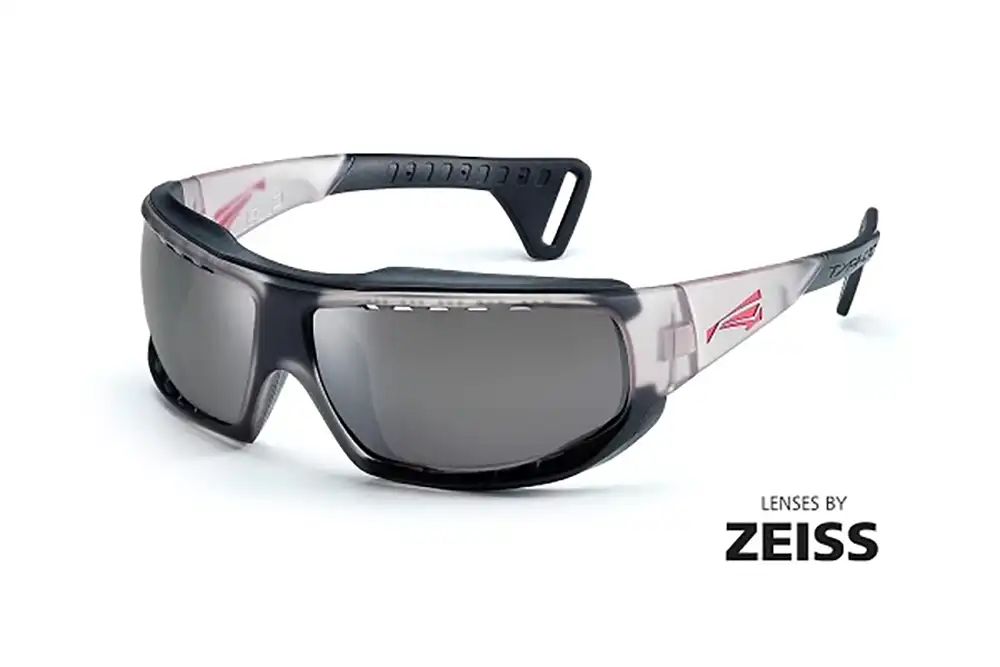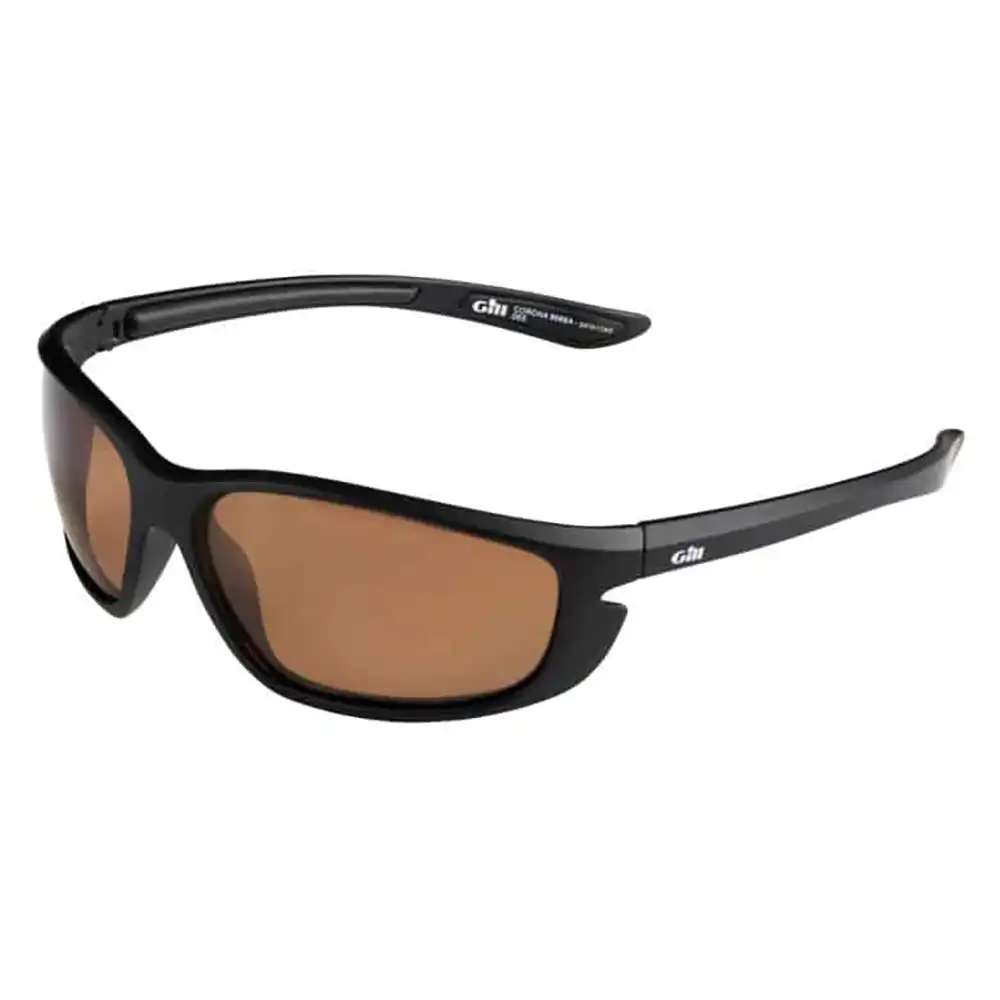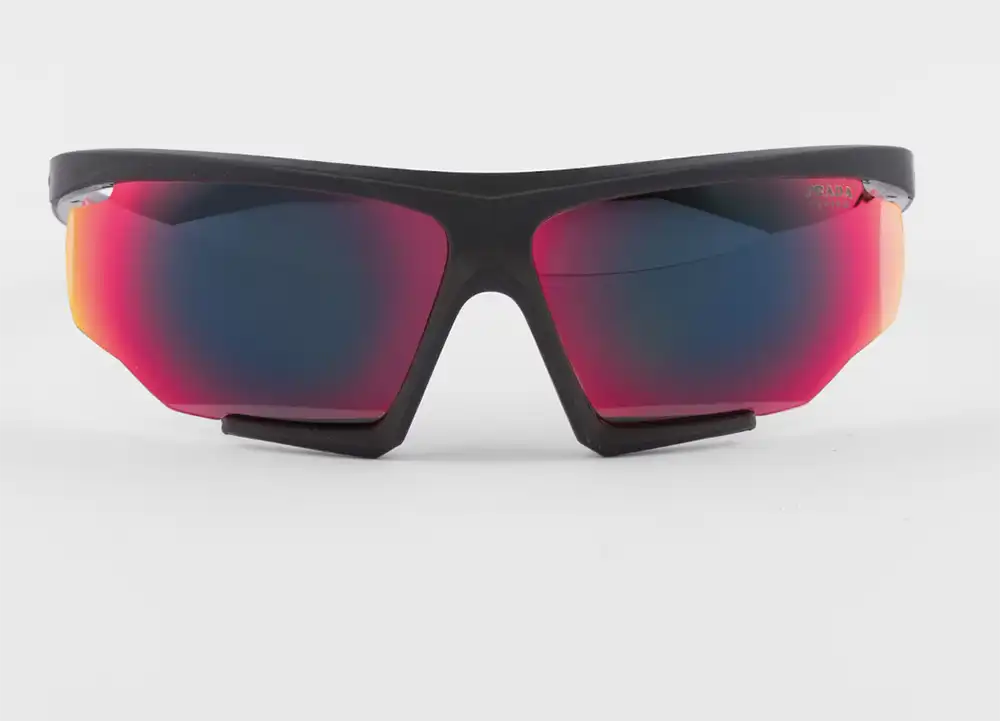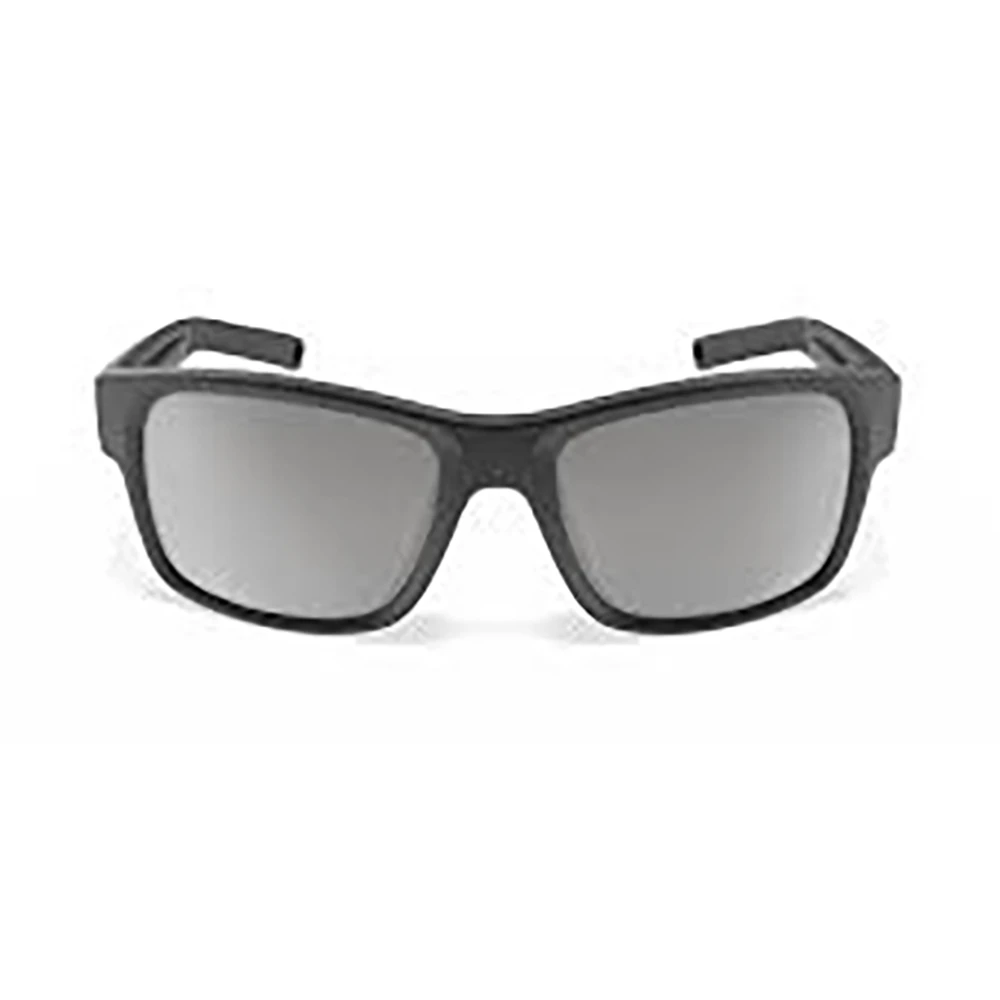Every sailor needs clear vision at sea. It’s a high-glare environment, often with bright sunlight, and combatting that and removing dangerous UV light means polarized sunglasses are a perfect accessory in every sailor’s bag. Choosing the right polarized lens sunglasses for you, however, depends on several factors, including your style, budget, and any specific features that are important to you.
Get it wrong, and quite apart from not looking your best, you won’t properly eliminate glare and could suffer from eye strain and even damage from UV rays. The only time polarized sunglasses will get in your way and not be essential is when looking at LCD displays, such as your phone, certain watches, and the boat computer. Look in any shop, however, and you’ll see hundreds of pairs of polarized sunglasses. With so many to choose from, here are some general guidelines suggested by our pro skippers to help you select the perfect shades for you:
- Lens Quality: Look for high-quality lenses that offer complete UV protection. The polarization should effectively reduce glare without distorting colors too much.
- Frame Material: The material of the frame can affect durability, weight, and comfort. Popular options include plastic (lightweight and durable), metal (classic and sturdy), and composite materials.
- Comfort and Fit: Ensure the sunglasses fit well. They should not pinch your nose or temples and should stay in place comfortably. Some sunglasses come with adjustable nose pads or temples for a better fit.
- Style: Choose a style that suits your face shape and personal taste. Popular styles include aviators, wayfarers, wraparounds, and round frames.
- Brand Reputation: Some well-known brands in polarized sunglasses include Ray-Ban, Oakley, Maui Jim, and Costa Del Mar. These brands are known for their lens quality and durability, and you will end up with a quality pair of sunglasses.
- Scratch resistance: A scratch-resistant lens is critical for any meaningful longevity. Most manufacturers or resellers will offer a proprietary treatment to the front and back of each lens, which repels grease and keeps them moisture-resistant while increasing scratch resistance and durability.
- Anti-reflective coating: In addition to a UV coating, You’ll find this helpful in reducing harsh glare and eye fatigue.
- Price: Polarized sunglasses can range from relatively affordable to very expensive. Decide on a budget that works for you, but remember that higher prices often mean better lens quality and frame durability.
- Warranty and After-Sales Service: Check if the sunglasses have a warranty or guarantee. Good after-sales service can be a bonus, especially if you damage the frame or lenses.
Remember that the “best” polarized sunglasses will vary from person to person based on individual needs and preferences. As much as anything, the all-important fit has to account for different face shapes and sizes. If you have a large head or wide temples, it can be hard to find sunglasses that fit right, so it’s a good idea to try on a few pairs to see what works best for you.
Our top recommendation for polarized sunglasses for sailing
LIP Typhoon Watershades

These are some of the best sailing sunglasses out there and the favorite sunglasses of quite a few of our pro crew.
- Their nylon polarized lenses have three coatings: hydrophobic, oleophobic, and scratch resistant, and give 100% UVA/B/C protection.
- The frames are lightweight, flexible, and vented to reduce heat build-up and fogging. Their sporty fit wraps around your head, and the leash and retainer system helps to ensure the frames stay in place.
Ok – they are more expensive at around $200, but they are so good that they’re worth it.
Other polarized sunglasses that you should check out
Gill Corona Polarized Sunglasses

These sunnies are floatable and have shatterproof, scratch-resistant lenses. An outer hydrophobic coating repels water (and hence salty deposits), and an inner oleophobic coating reduces fingerprints. At just $65, they’re great value.
Prada Linea Rosso Polarized Sunglasses

Serious style merchants Prada got involved with sailing in America’s Cup, and the Linea Rosso quickly became a favorite amongst the suaver sailing set. The rubberized black nylon frames give a look that works just as well in the yacht club as the high-spec lenses do on the water. They are pricey at $250.
Floating 100 Sunglasses

Decathlon’s budget brand are cracking value for money, even if they’re not fully loaded on the feature front. They may not be that scratch-resistant, but they’re fully polarized, fit well, float, and only cost $32, so if nothing else, as a spare pair, they excel.
Other brands making polarized sunglasses we like
- Ray-Ban: Famous for classic styles like the Wayfarer and Aviator, Ray-Ban offers high-quality polarization and timeless designs.
- Oakley: Known for its sporty design and high-tech lenses, Oakley is an excellent choice for sailors and those seeking high-performance sunglasses.
- Maui Jim: A brand known for high lens quality and glare reduction. They’re an excellent choice for sailors.
- Costa Del Mar: Specializing in sunglasses for sailing and fishing, Costa Del Mar’s lenses are great for yacht sailors.
- Persol: Known for their stylish Italian design and craftsmanship, Persol are elegant, high-quality polarized sunglasses.
- Smith Optics: They are renowned for their durable, high-performance eyewear; Smiths are suitable for most water sports.
- Serengeti: Famous for their photochromic and polarized technology, Serengeti sunglasses are great for driving and everyday use, offering clear, sharp vision in various light conditions.
- Polaroid: One of the original pioneers in polarized lens technology, Polaroid offers a wide range of surprisingly affordable yet quality polarized sunglasses.
- Julbo: Best known for mountaineering glasses, Julbo have excellent polarized options that make them just as great for sailors.
- Spy Optic: Stylish designs with high-quality polarization, best known for their Happy Lens technology, which enhances color and contrast.
FREQUENTLY ASKED QUESTIONS
What is UV radiation?
UV radiation, or ultraviolet radiation, is a form of electromagnetic energy emitted by the sun. It’s not visible to the human eye, being situated beyond the violet end of the visible spectrum (hence the name “ultraviolet”). UV radiation is commonly categorized into three types based on wavelength:
- UVA Rays:
- Longest wavelength within the UV spectrum.
- UVA is the most common form of UV radiation at the Earth’s surface and can penetrate deep into the skin, leading to aging and long-term skin damage.
- UVB Rays:
- A shorter wavelength than UVA, UVB causes sunburn and plays a crucial role in developing skin cancer.
- UVC Rays:
- UVC has the shortest wavelength and is potentially the most harmful. However, it is entirely absorbed by the Earth’s atmosphere, particularly the ozone layer, so it doesn’t reach the Earth’s surface.
What is polarization?
Polarized sunglasses work because they have a chemical-based anti-glare coating that knocks out UVA and UVB light. This helps to reduce glare and see better in bright conditions. The chemical treatment works by filtering out horizontal light. These come when sunlight bounces off objects or the sea, creating a glare. The coating only allows vertical light rays, and that is why polarized lenses give you excellent visibility, with everything with better color, better contrast, and much sharper detail.
What different types of lens material are there?
Sunglass lenses are made from various materials, each with its own characteristics that affect durability, clarity, weight, and price. Here are the most common types of sunglasses lens materials:
- Polycarbonate:
- It is exceptionally durable and resistant to impact, making it a popular choice for sailing sunglasses.
- It is lightweight and gives good UV protection.
- It is less optically clear than glass, but the difference is negligible for most users.
- CR-39 Plastic:
- A lightweight and relatively inexpensive plastic lens material.
- It offers good optical clarity but is less durable and impact-resistant than polycarbonate.
- Glass:
- It provides excellent optical clarity and is highly scratch-resistant.
- Heavier and more prone to shattering upon impact compared to plastic lenses.
- It offers natural UV protection but is typically more expensive.
- Trivex:
- Similar to polycarbonate, it’s lightweight and more impact-resistant.
- It offers better optical clarity than polycarbonate and also provides UV protection.
- They are often used in higher-end sunglasses.
- Acrylic:
- It is an inexpensive alternative to polycarbonate, often found in budget sunglasses.
- It is less durable and offers lower optical clarity.
- It is not recommended for sailing due to its lower clarity and durability.
- High-index Plastic:
- Thinner and lighter than CR-39 plastic, it is designed for high prescription strengths.
- It offers UV protection and is more comfortable for long-term wear.
- Typically, they are more expensive than CR-39 and polycarbonate lenses.
Can I get prescription lenses?
- Yes. Prescription lenses will likely be glass, polycarbonate, or high-index plastic. If you have a high prescription, choosing a frame that accommodates thick lenses without compromising comfort or aesthetics is essential.
Are glass lenses safe?
- Glass lenses in sailing sunglasses are probably not the best idea. They usually offer better optical clarity than plastic lenses and can be more resistant to scratches. The concern, however, is their impact resistance, as they can shatter upon impact. That’s why polycarbonate lenses are a safer alternative when you’re looking to buy your polarized sunglasses for sailing. They are more impact-resistant and lighter.
How can I tell the lens quality?
Here’s how you can evaluate the quality:
- Polarization Effectiveness:
- Test the polarization by looking at a reflective surface like water, a computer screen, or a shiny car surface. Polarized lenses should significantly reduce the glare.
- You can also perform a polarization test using two pairs of sunglasses. Align one pair at a 90-degree angle to the other. If the overlapping lenses block light, both are well polarized.
- UV Protection:
- Ensure the sunglasses offer 100% UV protection against UVA and UVB rays. This information is often indicated on a sticker or tag.
- Note that polarization and UV protection are different; a lens can be polarized and not offer UV protection, and vice versa.
- Optical Clarity:
- Check for any distortion by holding the glasses at arm’s length and looking through them in a straight line in the distance (like the edge of a door). Move the lens across the line. The lens quality is poor if the straight edge distorts, warps, or curves.
- Lens Coatings:
- High-quality polarized lenses often have additional coatings for scratch resistance, anti-reflective properties, and water repellence.
- Brand Reputation:
- Consider the brand’s reputation. The top brands usually have a higher standard of lens quality.
- Fit and Comfort:
- Good quality lenses should be in a frame that fits comfortably. The lens should not distort your vision and should feel comfortable to look through for extended periods.
- Certifications and Standards:
- Check if the sunglasses meet relevant safety and quality standards, like those of the American National Standards Institute (ANSI).
- Price and Warranty:
- Cheap polarized sunglasses may have compromised on lens quality.
- A good warranty can also be an indicator of quality.
Will my polarized fishing sunglasses work for sailing?
- Absolutely. Good polarization is essential for reducing glare from the water surface, allowing you to see into the water more clearly and helping you spot fish and underwater features.
What do the different lens colors do?
Different lens colors are not just for style; they are designed to serve specific purposes. Each color can affect contrast, brightness, and depth perception. Here’s an overview of what various lens colors do:
- Gray Lenses:
- Reduce overall brightness while maintaining normal color perception.
- Suitable for general use and bright, sunny days.
- Ideal for driving and outdoor sports.
- Brown or Amber Lenses:
- Enhance contrast and depth perception.
- Effective in moderate to bright conditions.
- Useful for activities like fishing, golfing, or cycling.
- Green Lenses:
- Filter blue light to enhance contrast while maintaining a natural color balance.
- It is suitable for general use and varying light conditions.
- It is helpful in both sunny and overcast conditions.
- Yellow or Gold Lenses:
- Provide excellent depth perception and contrast.
- Enhance visibility in low light, foggy, or hazy conditions.
- They are often used for driving, cycling, and shooting sports.
- Blue or Purple Lenses:
- Reduce glare and enhance color perception.
- It is ideal for snowy conditions or water sports.
- It is fashionable but not the most effective for reducing brightness.
- Red or Rose Lenses:
- Increase contrast by blocking blue light.
- Comfortable for prolonged wear.
- It benefits driving, skiing, and cycling, especially in snowy or cloudy conditions.
Are there eco-friendly polarized sunglasses?
There are. Indeed, as awareness about environmental sustainability grows, many eyewear brands have started to offer eco-friendly options. Things to look for include:
- Sustainable Materials:
- Frames are made from recycled materials, such as recycled plastics or metals.
- Use natural materials like bamboo, wood, or bio-based plastics that are biodegradable or come from renewable sources.
- Eco-Friendly Manufacturing:
- Production processes that minimize waste and reduce carbon footprint.
- Use of renewable energy sources in manufacturing.
- Recyclable Packaging:
- Use of packaging that is recyclable or made from recycled materials.
- Durability:
- Focus on creating products that are long-lasting to reduce waste.
- Brand Initiatives:
- Some brands are involved in environmental initiatives, such as tree planting or ocean cleaning, contributing a part of their sales to these causes.
- Certifications:
- Look for certifications or labels that indicate environmental responsibility, such as FSC (Forest Stewardship Council) for wood products or recycled content certifications.
Some popular brands known for their eco-friendly and sustainable practices include Costa Del Mar with their Untangled Collection, Zeal Optics, and Sunski.
What size lenses are best?
There is no best size for sailing sunglasses, but just be aware that while small lenses may give you an edgier look ashore (or on the water!), larger frames and bigger lenses will increase your coverage area and offer more glare protection.
What is a realistic budget for polarized sunglasses for sailing?
A realistic budget for polarized sunglasses for sailing can vary significantly depending on the brand, quality, and specific features you’re looking for. However, you can generally expect the following price ranges:
- Entry-Level: Around $20 to $50
- Sunglasses in this price range often include basic polarization and UV protection.
- They might lack some of the durability and specialized features of higher-end models.
- Suitable for casual or infrequent sailors.
- Mid-Range: About $50 to $150
- This range typically offers a good balance of quality, durability, and performance.
- You can expect better frame materials and more advanced polarization technology.
- Many well-known brands fall into this category, providing a good mix of reliability and value.
- High-End: $150 to $300 and above
- High-end sunglasses offer the best materials, lens quality, and advanced features (like hydrophobic coatings, superior glare reduction, and high durability).
- They often come from premium brands known for their optical clarity and sports performance.
- Suitable for serious or professional sailors who spend a lot of time on the water and need the highest level of performance and protection.